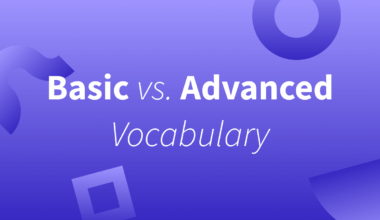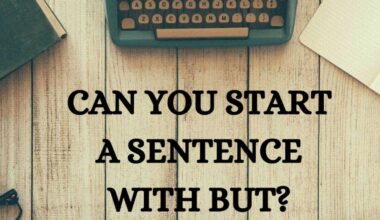I remember the first time I was asked to write documentation for a web project. It seemed straightforward until my supervisor pointed out a mistake:
I had used “back end” in some places and “backend” in others. I was a little puzzled. I thought they meant the same thing but there was a big difference.
Have you ever been in a situation where you were unsure whether to use backend or back end?
This blog post will establish the difference between the terms and educate you on how to use these terms correctly. After all, the right word choice can make all the difference in your writing.
Importance of Clarity in Grammar
When it comes to communication, especially in technical and business writing, clarity is crucial. Grammar is not just a set of rules but a tool that helps convey ideas with precision.
Misusing terms like “backend” and “back end” can lead to misunderstandings or signal a lack of attention to detail.
For example, in a tech-related context, using “back end” when you mean “backend” can confuse your readers or even make you look unprofessional.
Understanding the correct usage of compound nouns and compound adjectives like backend or back end ensures that your writing is clear, concise, and accurate.
So, let’s break it down and clarify when and how to use these terms properly.
Understanding Compound Words
Before we look at the specifics of backend or back end, let’s take a step back and talk about compound words.
A compound word is formed when two or more words are combined to create a new word with a unique meaning.
Compound words are extremely common in English and come in different forms. Here are three types of compound words:
Closed Compound Words: These are two words that have been joined together without a space to create a new meaning. For example, “notebook,” “airport,” and “fireman” are all closed compounds.
Hyphenated Compound Words: Some compound words require a hyphen to link the two parts. Examples include “well-being,” “mother-in-law,” and “long-term.”
Open Compound Words: Open compounds are two words that are used together to create a specific meaning but are written with a space between them. Examples include “ice cream,” “post office,” and “real estate.”
So, where do “backend and back end” fit in? That’s where things get interesting.
“Backend” functions as a closed compound noun in technical environments, while “back end” is an open compound noun that can be used in broader contexts.
Both terms can be correct, but their usage depends on the context and the role they play in a sentence. Let’s look at that in detail.
Backend as a Compound Noun
The term “backend” is often used as a compound noun in web development used to describe the parts of a website, application, or software system that users don’t see but are essential for its functionality.
When you think of “backend,” picture all the processes and systems that work in the background to keep a website or app running smoothly.

Examples of “Backend” Usage
Our backend was developed using Python.
The backend supports all the customer-facing functionalities.
I specialize in backend development.
When to Use “Backend”
In technical contexts: Whenever you’re writing about web development, systems architecture, or any technical infrastructure, “backend” as one word is your go-to.
As a noun: If you’re referring to the back part of a system or technology, stick with the single word “backend.”
By using “backend” in these instances, you’re keeping your language consistent with industry standards. It’s a term that tech professionals and even marketers working in technical niches will recognize.
Back End as an Open Compound Noun
On the other hand, “back end” is an open compound noun that refers to the literal or figurative rear or final stage of something. Unlike “backend,” which is used in a technical sense, “back end” can apply to a wide variety of settings.
Literal Meaning of “Back End”
You might use “back end” to refer to the physical end of a vehicle or building.
Example: He stored the tools in the back end of the garage.
Figurative Meaning of “Back End”
Additionally, “back end” can be used to describe the final stages of a process or system. In this context, it’s more about sequence and time rather than technology:
Example: The back end of the project was more complicated than the initial stages.
When to Use “Back End”
In non-technical contexts: When talking about the final phase of a process, the rear of a physical object, or the conclusion of an event. If you’re describing something outside the realm of technology, opt for “back end.”
“Back end” feels a little more traditional and less specialized. You’ll see it used frequently in business and everyday English when referring to the final part of a project, timeline, or physical location.

Now, let’s look at one more variation of the term and how it also fits into the framework.
Back-End (hyphenated)
Here’s where things get a little more different. If you’re using “back end” as an adjective to describe a noun, you’ll need to hyphenate it.
This is a common grammar rule for compound adjectives, which are phrases where two words work together to describe something.
Examples of “Back-End” Usage (Hyphenated)
The back-end team worked late to ensure the website launch went smoothly.
We’re optimizing our back-end processes to improve performance.
The back-end developers fixed the issue quickly.
In these sentences, “back-end” functions as an adjective describing teams, processes, and developers. Hyphenating it ensures that it’s clear the two words function together as a single descriptive unit.
When to Use “Back-End”
As a compound adjective: When describing a person, team, or system, use the hyphenated version “back-end.” Using the hyphen helps clarify that the phrase is modifying the noun that follows, to avoid confusion.
In both technical and non-technical settings, correct hyphenation adds precision.
Common Mistakes and How to Avoid Them
Even experienced writers and professionals often mix up the terms backend or back end. To avoid common mistakes, keep these key distinctions in mind:
1. Technical vs. Non-Technical Contexts: Use “backend” as one word when you’re referring to technology-related topics like programming, servers, and web development. Use “back end” as two words for non-technical contexts.
2. Nouns vs. Adjectives: When using the phrase as a noun, “backend” is appropriate in tech, and “back end” works for non-tech contexts. When describing a noun (e.g., “back-end development”), always hyphenate.
3. Literal vs. Figurative Use: If you’re talking about a physical or metaphorical “end” of something, like the rear of a building or the final phase of a project, use “back end.” In tech-specific language, always go with “backend.”
Practical Examples on Backend or Back end
Let’s put what you’ve learned into practice. Try filling in the blanks with backend or back end or back-end :
1. The ______ developers worked on the database.
2. We’re fixing issues on the ______ of the website to improve speed.
3. The boxes were stored in the ______ of the truck.
4. Our ______ team is focused on optimizing server performance.
5. By the ______ of the project, we’ll have implemented all the changes.
Answers:
1. backend
2. backend
3. back end
4. back-end
5. back end
Conclusion
By keeping these simple rules in mind, you’ll never have to second-guess your choice of backend or back end again!
Don’t let small mistakes slip through! Start applying these rules in your writing today and watch your communication become clearer and more precise.
And if you’re still unsure or need a refresher, bookmark this guide and refer to it whenever you’re in doubt.
Ready to level up your grammar? Go ahead and make your writing more polished: one word at a time!
Share this post to keep others informed.






